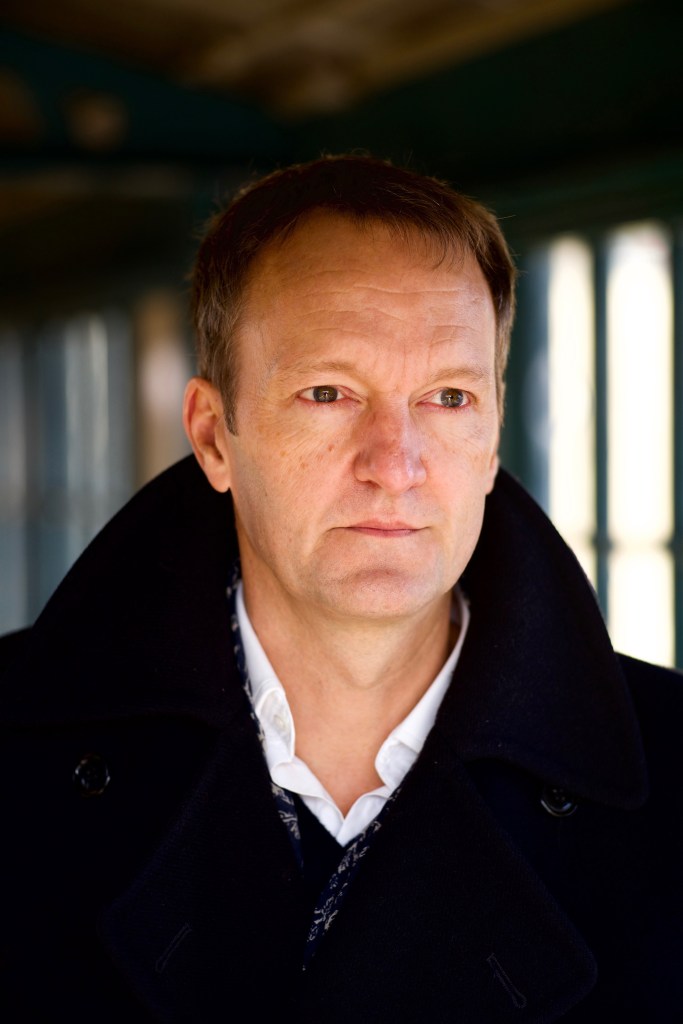A Saga of Ambition and Heroism: A Guest Post by Adam Higginbotham
The Challenger disaster left us reeling in the wake of an unimaginable tragedy. Famed author and journalist Adam Higginbotham (Midnight in Chernobyl) knew he wanted to tell the story of Challenger soon after publishing his first book. In the exclusive essay down below, Higginbotham discusses the events that led him to writing this book and what he found in his research.
Challenger: A True Story of Heroism and Disaster on the Edge of Space
Challenger: A True Story of Heroism and Disaster on the Edge of Space
In Stock Online
Hardcover $35.00
Millions of people watched the Challenger disaster unfold and this is the first detailed account of exactly what happened that day. Tense and fast-paced, this is journalism at its best.
Millions of people watched the Challenger disaster unfold and this is the first detailed account of exactly what happened that day. Tense and fast-paced, this is journalism at its best.
I was fascinated by the space program as a boy, and I was 17 years old on the morning of January 28 1986. I remember clearly where I was when I heard that Challenger and her crew had been lost that day. But I didn’t think about writing about the accident until after the publication of my first book, Midnight in Chernobyl in 2019; then, in discussing the Soviet catastrophe in interviews and panels, I began to realize not only that the paths to the two disasters shared a great many parallels, but that Challenger had left an indelible mark in my memory that Chernobyl—which happened almost exactly three months later–had not.
And when I began looking more deeply into what happened, I discovered that what I recalled of the events surrounding the Challenger accident was only a tiny fraction of the story. I remembered that the doomed crew had included Christa McAuliffe, the “Teacher in Space”, but knew next to nothing about the other six members of the crew, or what had brought each of them to the launchpad that morning; and I found that the roots of the disaster lay not simply in cold weather and a single rocket component gone bad, but in a saga of ambition and heroism, of hubris and human frailty—and of men whose arrogance and overconfidence ended up betraying the very principles on which their work had been founded. I knew then that there was an opportunity to tell the Challenger story in a new way—and to do so before those surviving witnesses to what had happened passed away and their recollections became lost to history.
I began my research in earnest in 2020, just as the tide of Covid-19 began to rise, and started to interview eyewitnesses almost immediately; my archival work took longer, delayed by Federal shutdowns that eventually kept research reading rooms closed for almost two years. But the tale that emerged gradually–from my conversations with retired astronauts and NASA staff scattered across the country; with ageing rocket engineers and members of the Presidential commission tasked with finding out what went wrong; and from file boxes and carts laden with decades-old documents–contained frequent twists and surprising revelations.
The arrival of the most diverse group of astronauts in history—including the first African American in space, Guy Bluford, and Sally Ride, the first American woman to go into orbit—revolutionized NASA, at the same time the agency concocted ever-more audacious missions for them to fly aboard the experimental space shuttle; meanwhile, senior managers and engineers were stretched thin, trying to do too much with too little in an attempt to make the new program both economically viable, and dazzle anew a public bored by trips into space that soon seemed routine. In long-forgotten memos and technical reports, I found warnings about the possibility of catastrophe; in a meticulously detailed—but never-published—memoir written by rocket engineer Roger Boisjoly, I discovered the story of the man who tried to stop the countdown of Challenger the night before the fateful launch, and whose failure to do so, and determination to bring the truth of his efforts to light afterwards, ended his career and tormented him for the rest of his life. And in the journals and memories of the friends and families of the seven Challenger crew, I found poignant reminders of the human cost of the tragedy that continues to be paid long after each of these strands of history converged on a cold January morning at Cape Canaveral.

